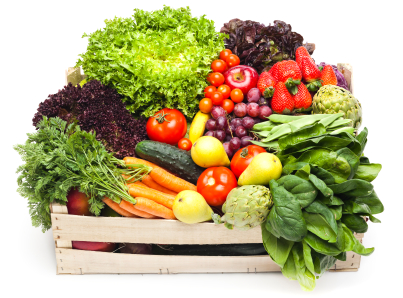
When it comes to food as medicine, one of the simplest guides is to “eat the rainbow.” The natural pigments that give vegetables their vibrant colors are not just for beauty—they carry specific phytonutrients that target different systems in the body. Each color tends to emphasize a particular healing effect, and when you combine them, you create a balanced nutritional defense for your health.
Red Vegetables – Cardiovascular Protection
Red vegetables such as tomatoes, red peppers, and beets are rich in compounds like lycopene, betalains, and anthocyanins. These have been shown to help reduce oxidation of LDL cholesterol, improve arterial flexibility, and support healthy blood pressure. Beets in particular also enhance nitric oxide production, which relaxes blood vessels and improves circulation. It’s no accident that the color of blood and the color of these vegetables match their role in strengthening the heart and circulatory system.
Orange and Yellow Vegetables – Immune and Reproductive Health
Carrots, sweet potatoes, and squash contain carotenoids such as beta-carotene and lutein. These compounds are converted into vitamin A, which is essential for immune balance, eye health, and reproductive vitality. They also act as antioxidants that protect tissues from free-radical damage. Think of orange and yellow foods as protectors of vision and immunity.
Green Vegetables – Detoxification and Alkalinity
Spinach, kale, broccoli, and parsley are loaded with chlorophyll, magnesium, and sulfur compounds like sulforaphane. These support liver detoxification, improve oxygenation, and help balance the body’s pH. The high magnesium content of greens supports muscular relaxation, heart rhythm, and energy production. Greens also feed the microbiome with natural fiber, helping digestion and gut health.
Blue and Purple Vegetables – Brain and Longevity Support
Eggplant, purple cabbage, and purple carrots are rich in anthocyanins, which protect neurons, improve memory, and may help guard against dementia. These compounds also support healthy blood vessels by reducing inflammation and strengthening connective tissue. Blue and purple foods are strongly associated with healthy aging and nervous system balance.
White and Tan Vegetables – Immune and Hormonal Balance
Garlic, onions, leeks, and mushrooms may lack bright color, but their sulfur compounds, allicin, and beta-glucans pack a punch. These compounds help regulate blood sugar, boost immune function, and offer natural anti-microbial support against bacteria, viruses, and fungi. They also assist in balancing hormone metabolism, especially estrogen detoxification in the liver.
Putting It All Together
Eating a full spectrum of vegetable colors ensures your body receives a diverse mix of antioxidants, vitamins, and plant-based compounds. While red vegetables are especially powerful for cardiovascular protection, the greatest benefit comes from combining all the colors on your plate. In natural healthcare, variety is the key to resilience.

